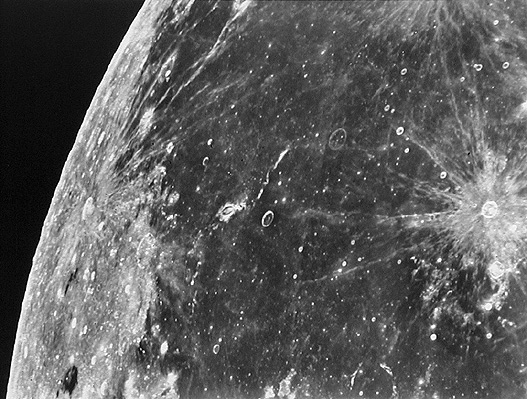February 2, 2004
Brightness at Noon
Image Credit: Consolidated Lunar Atlas plate |
|
Brightness at Noon The brightness of local noon robs the familiar Moon of shadows. Instead of craters and hills we are left with reflectivity or albedo. The full Moon is strange, another world worthy of our exploration. Do you recognize this landscape? The vast dark area is south-central Oceanus Procellarum, whose low reflectivity is due to mare lavas dominated by dark minerals like iron and magnesium. The bright region to the left is highland crust made mostly of the whitish mineral anorthosite. Bright streamers of rays are anorthosite fragments that were excavated and flung across the lunar surface by impacts (Kepler at right and Olbers A at left). And the elliptical white ring with a long tail is Reiner Gamma. By giving a name we think we know something about an object. But the swirl of Reiner Gamma mocks us - or did for generations. Now we know that it coincides with a strong magnetic anomaly and that the magnetism blocks high energy solar wind that darkens lunar material. Reiner Gamma may be a detailed trace of the local lunar magnetic field, but the question remains - what was the source of bright material that has been protected by the magnetism? Related Links: Yesterday's LPOD: Theophilus Tomorrow's LPOD: Lunar Bible |
|
Author & Editor: |
COMMENTS?
Register, Log in, and join in the comments.




